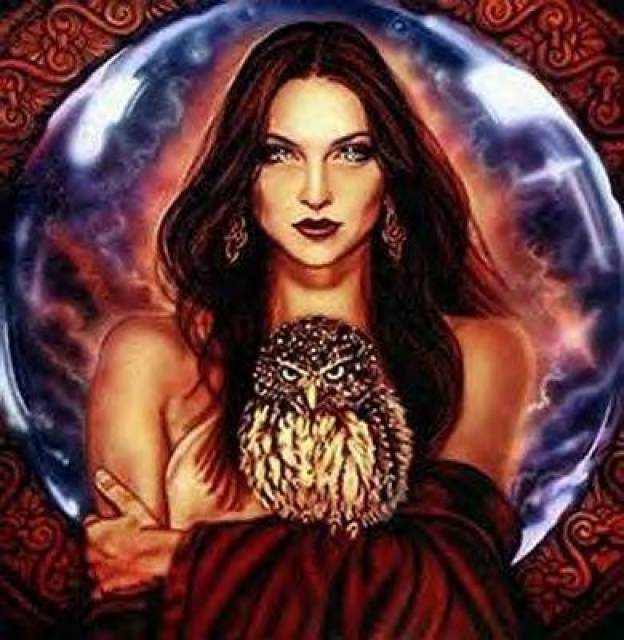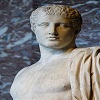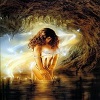Hecate
Titan goddess of witchcraft and enchantments
Hecate would appear to have been originally a moon-goddess worshipped by the Thracians. She became confounded, and eventually identified with Selene and Persephone, and is one of those divinities of whom the ancients had various conflicting accounts. Hecate was the daughter of Perses and "gold-wreathed" Astræa (the starry night), and her sway extended over earth, heaven, and hell, for which reason she is represented in works of art as a triple divinity, having three female bodies, all young and beautiful, and united together.
In later times, when this divinity becomes identified with Persephone, she is supposed to inhabit the lower world as a malignant deity, and henceforward it is the gloomy, awe-inspiring side of her character which alone develops itself. She now presides over all practices connected with witchcraft and enchantments, haunts sepulchres, and the point where two roads cross, and lonely spots where murders have been committed.
She was supposed to be connected with the appearance of ghosts and spectres, to possess unlimited influence over the powers of the lower world, and to be able to lay to rest unearthly apparitions by her magic spells and incantations.
Hecate appears as a gigantic woman, bearing a torch and a sword. Her feet and hair are formed of snakes, and her passage is accompanied by voices of thunder, weird shrieks and yells, and the deep baying and howling of dogs. Her favour was propitiated by offerings and sacrifices, principally consisting of black lambs.
Her festivals were celebrated at night, by torchlight, when these animals were offered to her, accompanied by many peculiar ceremonies. These ceremonies were carried out with the minutest attention to details, as it was believed that the omission of the slightest particular would afford to her ministers, the evil spirits of the lower world, who hovered round the worshippers, an opportunity for entering among them, and exerting their baneful influence.
At the end of every month food was placed wherever two roads met, in readiness for her and other malignant divinities. In studying the peculiar characteristics which Hecate assumes when she usurps the place of Persephone, the rightful mistress of the lower world, we are reminded of the various superstitions with regard to spectres, witchcraft, etc., which have, even down to our own times, exerted so powerful an influence over the minds of the ignorant, and which would appear to owe their origin to a remote pagan source.
[1]
More About Hecate
HEKATE (or Hecate) was the goddess of magic, witchcraft, the night, moon, ghosts and necromancy. She was the only child of the Titanes Perses and Asteria from whom she received her power over heaven, earth, and sea.
Hekate assisted Demeter in her search for Persephone, guiding her through the night with flaming torches. After the mother-daughter reunion became she Persephone's minister and companion in Haides.
Two metamorphosis myths describe the origins of her animal familiars: the black she-dog and the polecat (a mustelid house pet kept to hunt vermin). The bitch was originally the Trojan Queen Hekabe, who leapt into the sea after the fall of Troy and was transformed by the goddess into her familiar. The polecat was originally the witch Gale who was transformed into the beast to punish her for her incontinence. Other say it was Galinthias, the nurse of Alkmene, transformed by the angry Eileithyia, but received by Hekate as her animal.
Hekate was usually depicted in Greek vase painting as a woman holding twin torches. Sometimes she was dressed in a knee-length maiden's skirt and hunting boots, much like Artemis. In statuary Hekate was often depicted in triple form as a goddess of crossroads.
Hekate was identified with a number of other goddesses, including Artemis and Selene (Moon), the Arkadian Despoine, the sea-goddess Krataeis, the goddess of the Taurian Khersonese (of Skythia), the Kolkhian Perseis, and Argive Iphigeneia, the Thracian goddesses Bendis and Kotys, Euboian Maira (the dog-star), Eleusinian Daeira and the Boiotian Nymphe Herkyna.
[2]












